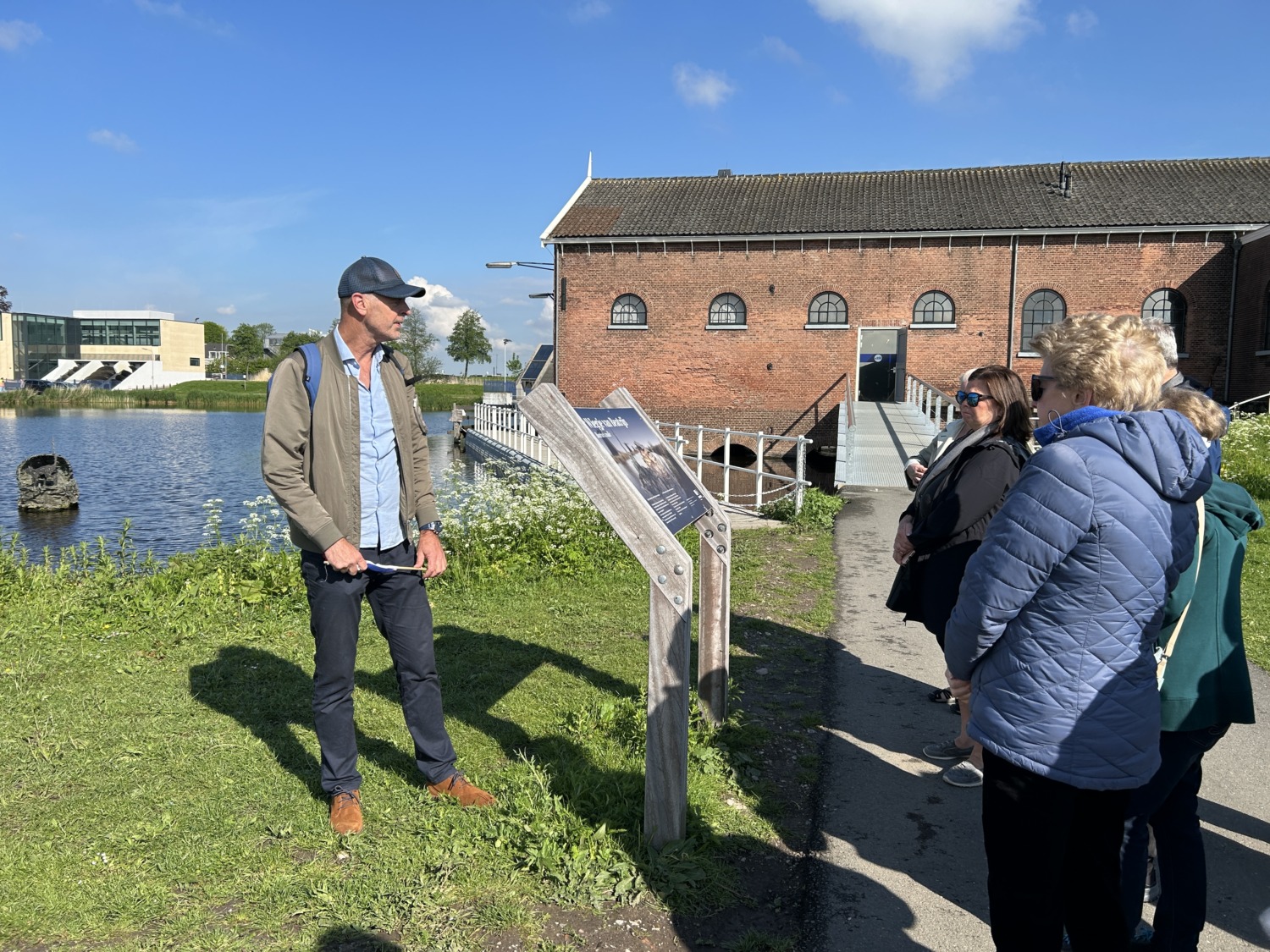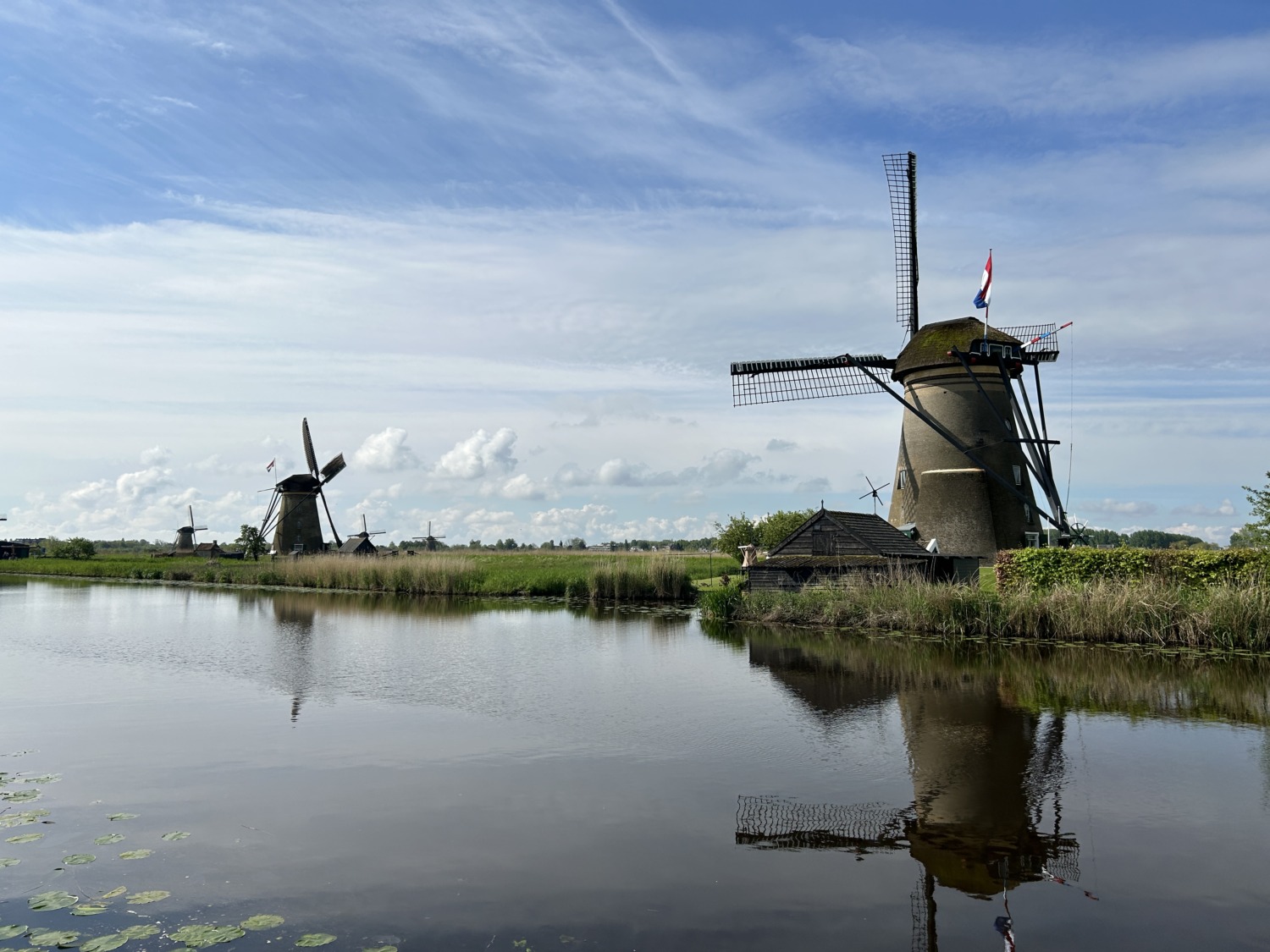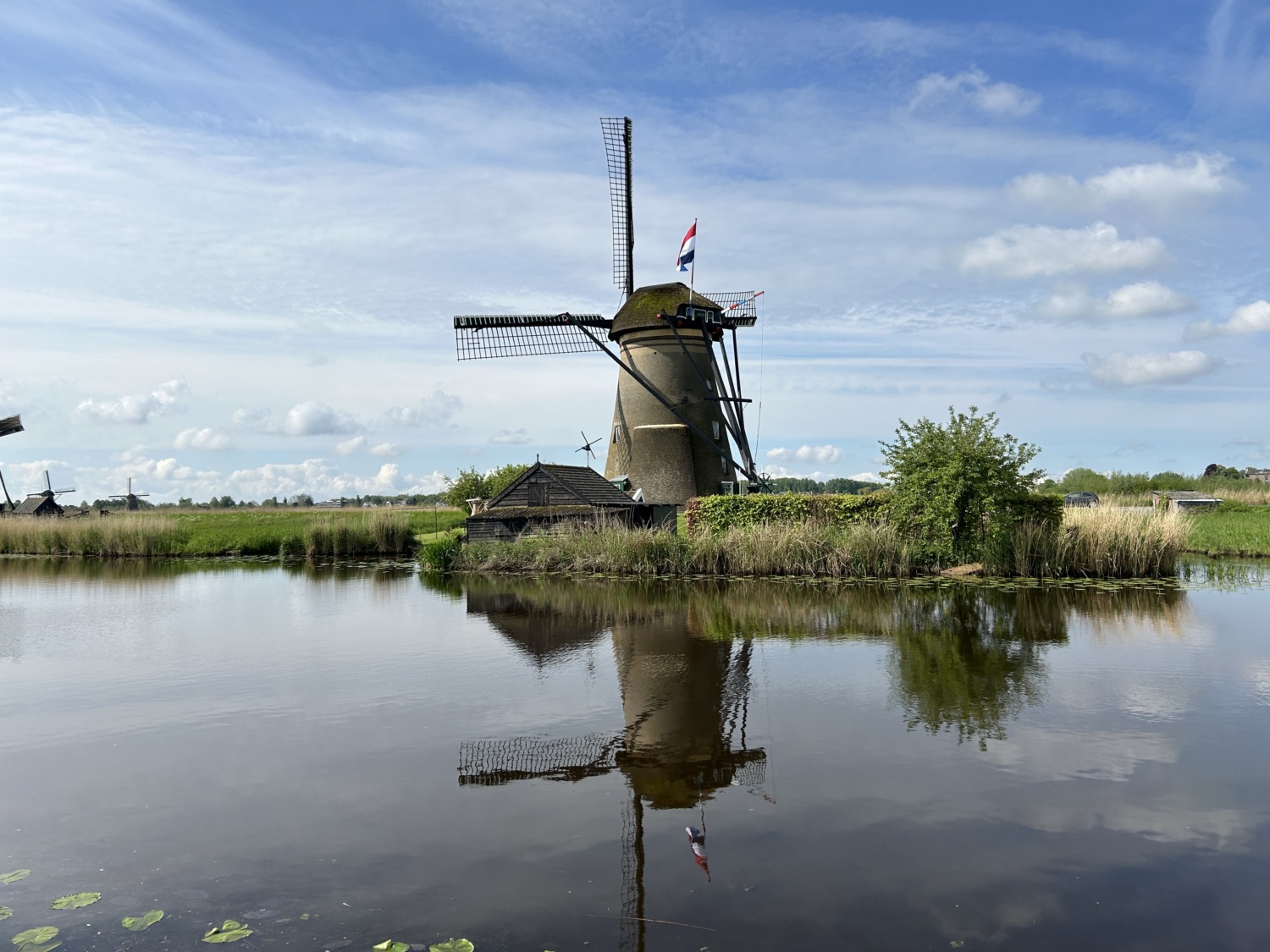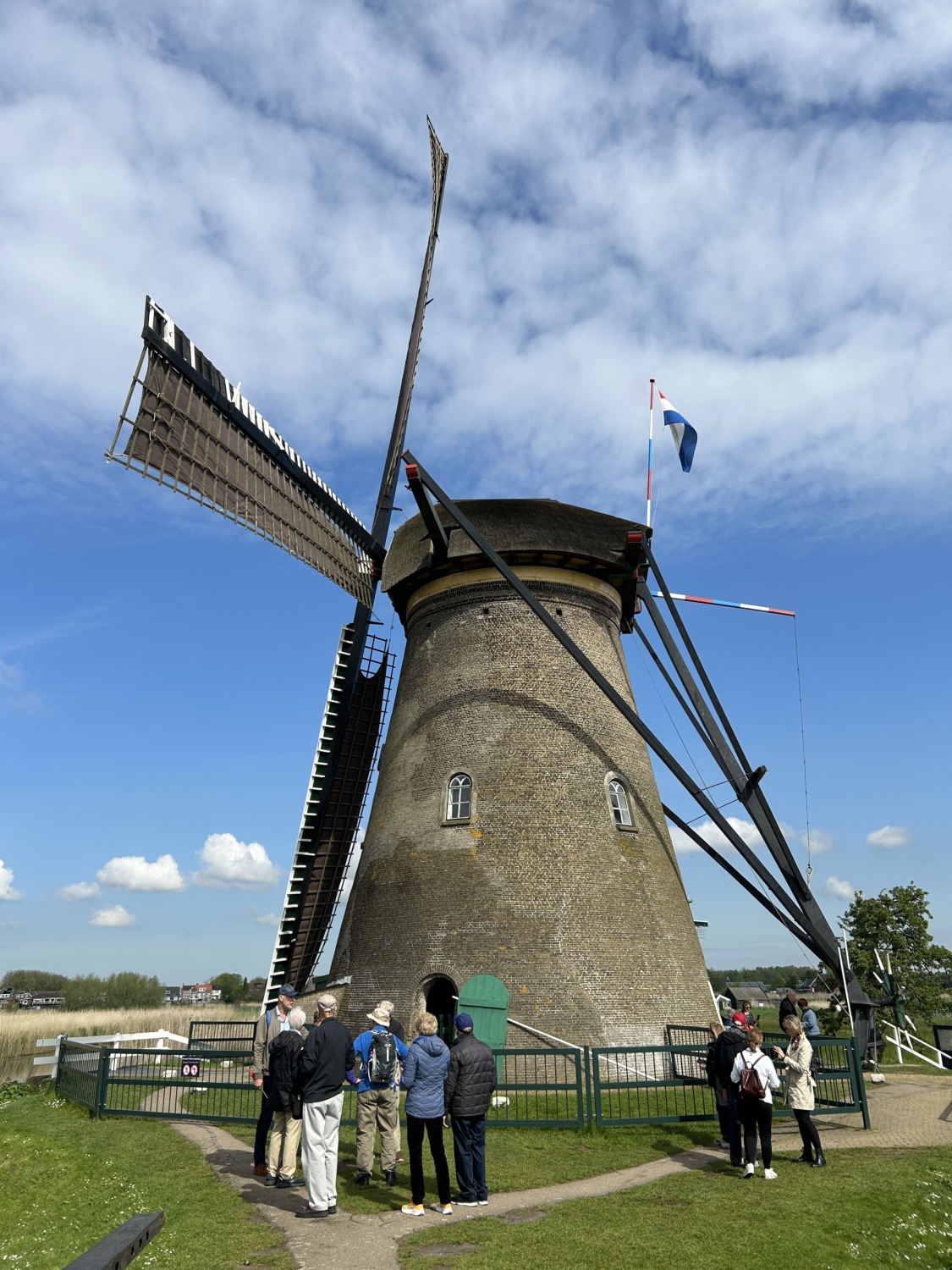At the end of our first month aboard ship, we took a shore excursion to Kinderdijk. We returned to Rotterdam, the home port of the Nieuw Statendam. Most of the Dutch guests got off the ship and lots of Americans and Canadians boarded. Tom and I could have spent our time in port exploring Rotterdam, but it is a modern city without much that distinguishes it from any other city. In fact, the most distinctive thing about Rotterdam is its port, the largest in Europe, and we had already seen most of that several times.
Tom and I decided we had seen the tulips, so we needed to see the other most distinctive thing in the Netherlands, the windmills. Kinderdijk is the place to go to see working windmills and discover the history of windmills, land, and water in the Netherlands. For 700 years the people of the Netherlands have used windmills to claim their land from the sea.
A thousand years ago, this whole area was one big peat bog, trapped between raging rivers and the fury of the sea. Hunters and fishermen came here only in summer, if the water levels were low enough. As the first permanent settlers arrived, they built their homes on local sand dunes to keep their heads above water in case of floods. Over time, greater numbers of people wanted to try their luck on these fertile soils surrounding the fast growing trade cities of the Western Netherlands. To this end, dykes were raised to keep the water out, but this gave rise to a new problem instead. Groundwater and rainwater had to be drained from the land within the dykes, and discharged into the river beyond, or the polders would be flooded all over again.
The water kept fighting back. The continued drainage caused the peat soil to keep subsiding, allowing the ground level to drop as the river water level kept rising. Then, on a stormy November night in 1421, disaster struck. The infamous Saint Elisabeth’s flood swept away the poorly maintained dykes protecting the polder, causing thousands of people to drown. After the flood, the survivors found a cradle bobbing up and down on the water. Inside the cradle was a baby, safe and sound after the flood.
Over the following centuries, trial and error led to continued improvement of a system using windmills and pumping stations. The basins serve as buffers to contain the surplus water. The water in the lower basin can be lifted up into the upper basin in the event of excess water, but it can also be redirected back into the polder canals in times of drought. Eventually, the Water Boards of Overwaard and Nederwaard had twenty windmills up and running between them, of which nineteen remain. The windmills, which were in danger of being removed in the 1970’s, are now preserved as a UNESCO World Heritage Site.

Tom and I boarded a bus with a guide (I couldn’t get his name, although he said it several times). There were only 15 on our tour, so it was easy for us to follow our guide, who was well over 6 feet tall. At Kinderdijk, we followed our guide as he told us about the Dutch being the world leaders in water management. Seeing the 19 windmills all in one view was pretty amazing.
We watched a movie that gave us some history and explained how windmills and other kinds of pumps worked. Then we headed out to walk along the Middlekade with windmills on either side. These windmills were built from 1738 to 1740 and were being preserved. People lived in each of the mills, except for the two mill museums, in order to maintain their authenticity. As we walked, we saw the sails being added to the windmill museum we were headed for. When the wind isn’t very strong, the sails help move the giant arms along.
We walked up and down the four levels of the windmill and watched the gears slowly turning. It was very interesting and impressive to see something so old still working. The people who live in the windmills pay rent and there is a ten year waiting list of people who want to live in the mills and help maintain them.
After checking out the windmill museum, we headed to the gift shop. I wanted a demitasse spoon but I also wanted to break my 50 euro bill so I would have a tip for the tour guide. Unfortunately, the gift shop and restaurant only took credit cards, no cash. So our excellent tour guide had to make do with the euro change I had. We have found it difficult to break the larger bills because the shops prefer credit cards and don’t carry much cash. I thought about asking the tour guide to give me change, but decided that would be more tacky than giving him my odds and ends.

We climbed back on the bus and took a nice, narrated driving tour of Rotterdam. We drove over the Erasmus bridge and around the island in the middle of the river, which is the only old part of Rotterdam. The port of Rotterdam was bombed extensively by the Germans at the beginning of World War II, which is why there isn’t much of an old section.
Our tour of Kinderdijk was just as stunning and interesting as our tour of Keukenhof two weeks before. These two places in the Netherlands are are part of what has formed the character of the Netherlands today.





